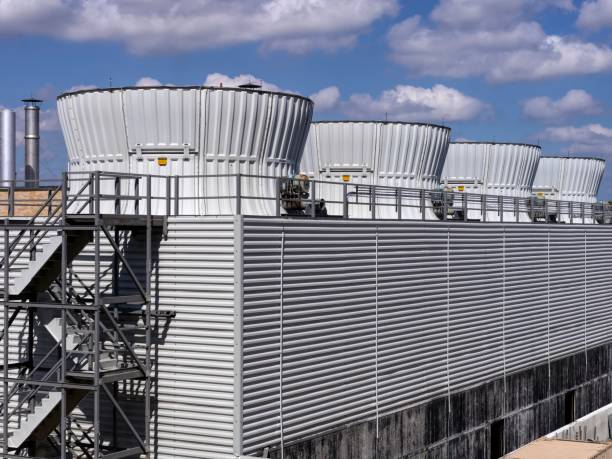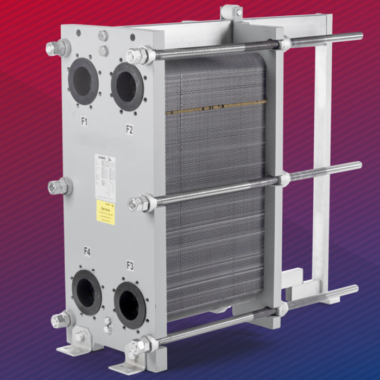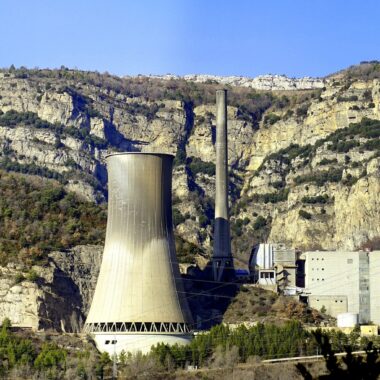Top Trends in Cooling Tower Technology for 2024
Introduction
As industries push for greater efficiency, sustainability, and technological advancement, cooling tower technology continues to evolve. In 2024, several key trends are shaping the future of cooling towers, with a strong focus on energy savings, environmental impact, and smarter systems. From advanced materials to AI-powered optimization, these innovations are not only enhancing performance but also reducing operational costs and environmental footprints. This guide explores the top trends in cooling tower technology that are transforming industries and paving the way for a more sustainable future.The Maintenance of Cooling Towers
Energy Efficiency and Sustainability
- Smart Cooling Towers: Integration of IoT (Internet of Things) and AI technology is allowing cooling towers to monitor their performance in real-time, adjust operations, and optimize energy consumption automatically.
- Energy-Saving Designs: Manufacturers are focusing on designs that reduce water and energy usage, such as hybrid cooling towers that combine wet and dry cooling technologies for greater efficiency.
- Renewable Energy Integration: Cooling towers are increasingly being powered by renewable energy sources, such as solar panels, to reduce carbon footprints and enhance sustainability.
Advanced Materials and Corrosion Resistance
- New Composite Materials: The use of advanced materials, such as corrosion-resistant composites, is increasing the longevity of cooling towers and reducing maintenance costs.
- High-Performance Coatings: Innovative coatings are being developed to protect cooling tower components from corrosion, especially in harsh environments, extending the life of the equipment.
Water Conservation and Treatment Technologies
- Water Recycling Systems: Advanced water treatment systems are being integrated into cooling towers to recycle water and minimize water usage. This trend is especially important in water-scarce regions.
- Zero Liquid Discharge (ZLD): ZLD technology is becoming more prevalent in cooling tower systems to eliminate water discharge, reduce environmental impact, and comply with stringent regulations.
Modular and Scalable Cooling Towers
- Modular Designs: Modular cooling towers are gaining popularity due to their flexibility. They allow for easier expansion and customization, enabling industries to scale their cooling capacity based on demand.
- Pre-Engineered Solutions: These solutions are becoming more common as they offer faster installation, reduced downtime, and lower initial costs compared to traditional custom-built cooling towers.
Enhanced Automation and Monitoring
- Automated Maintenance Systems: Cooling towers are now equipped with automation systems that schedule maintenance tasks, detect issues before they lead to failures, and optimize performance without human intervention.
- Remote Monitoring: With the rise of cloud-based systems, cooling tower operators can now monitor and control their systems remotely, improving operational efficiency and reducing downtime.
Hybrid Cooling Technologies
- Combination of Wet and Dry Cooling: Hybrid cooling towers, which combine wet and dry cooling methods, are becoming more prevalent. These systems offer the benefits of both technologies, providing efficient cooling while conserving water and energy.
Smart Water Management Systems
- Intelligent Water Use: Smart sensors and automated controls are being implemented to optimize water usage within cooling towers. These systems can adjust water flow rates, monitor water quality, and automatically perform chemical dosing to ensure efficient operation.
- Water Leak Detection: Integrated leak detection systems are becoming more common, reducing water waste and preventing costly damage caused by leaks.
Enhanced Fill Materials and Heat Exchange Efficiency
- Next-Generation Fill Materials: Cooling tower fill materials are evolving, with new designs and materials enhancing heat exchange efficiency while reducing fouling and maintenance. These advancements allow for improved cooling capacity while conserving water.
- Low-Fouling Fills: Materials that resist fouling, scaling, and biological growth are becoming popular as they reduce the need for frequent cleaning and improve the overall efficiency of the cooling process.
Artificial Intelligence and Machine Learning
- AI-Powered Optimization: AI and machine learning algorithms are being deployed to continuously optimize cooling tower operations. These systems can learn from operational data to enhance cooling efficiency, reduce energy consumption, and identify areas for improvement.
- Anomaly Detection: AI-powered systems can automatically detect anomalies or inefficiencies in cooling tower operations, allowing for quick corrective actions before issues escalate.
Use of Biodegradable and Eco-Friendly Chemicals
- Eco-Friendly Water Treatment: As environmental concerns grow, there is a shift towards using biodegradable and eco-friendly chemicals for water treatment in cooling towers. These chemicals minimize the environmental impact of cooling tower blowdown and align with green industry standards.
- Green Chemical Alternatives: Innovative green alternatives are being developed to replace traditional water treatment chemicals, reducing toxicity and environmental risks.
Focus on Resiliency and Adaptability
- Extreme Weather Adaptability: Cooling towers are being designed with features to withstand extreme weather conditions, such as high winds, hurricanes, or freezing temperatures. These adaptations ensure the cooling towers remain operational and efficient in all climates.
- Redundancy for Critical Applications: In industries where cooling towers are critical to operations, redundancy features (like backup systems) are becoming standard to ensure uninterrupted cooling even in the event of a failure.






